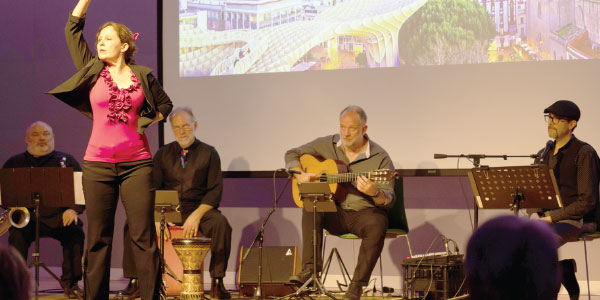Las civilizaciones comparten una antigua tradición del hogar como un santuario, como un refugio seguro y como inviolable.
“¿Qué es más sagrado y más fuertemente resguardado por cada sentimiento sagrado, que la propia casa de un hombre?”, escribió Cicerón hace 2,000 años. Pero la seguridad y protección de un hogar depende de la seguridad y protección del barrio donde se encuentra. Y eso es determinado por los residentes.
Vecindarios seguros y protegidos están poblados por personas que cooperan entre sí. Están familiarizados con las rutinas regulares de sus vecinos. Están alerta, son atentos y cariñosos. Ellos informan con prontitud las actividades sospechosas a la policía. En resumen, los habitantes de los vecindarios seguros se cuidan el uno al otro.
En noviembre, vecinos detuvieron a intrusos en crímenes separados en Strawberry Hill en Kansas City, Kan., y Old Northeast en Kansas City, Mo. En ambos casos, los intrusos derribaron las puertas. El dueño de la casa en Strawberry Hill no estaba; la residente de Northeast y su bebé estaban durmiendo en casa.
Gracias a sus vecinos alertas y de pensamiento rápido que ahuyentaron a los intrusos y llamaron a la policía, los que hubieran sido víctimas no fueron perjudicados y nada fue robado.
La manera más eficaz de prevenir y reducir la delincuencia es si los vecinos se ayudan entre sí, según el Consejo Nacional de Prevención de la Delincuencia, que ha declarado:
“Es un hecho: Los vecinos conscientes reducen el crimen. El poner en práctica la pólitica del ‘buen vecino’ honrada por mucho tiempo sigue siendo el factor más importante en la solución de problemas. Usted puede tomar medidas para convertir a su vecindario en un lugar más seguro. Cuesta poco más de su interés y cooperación. ¿Vale la pena la inversión? ¡Definitivamente! Ustedes pueden estar a salvo del crimen, pero sólo si se preocupan lo suficiente como para ayudarse unos a otros”.
[divider]
The value of neighborliness
Civilizations share an ancient tradition of home as sanctuary, as safe haven, as inviolable.
“What more sacred, what more strongly guarded by every holy feeling, than a man’s own home?” Cicero wrote 2,000 years ago. But the safety and security of a home depend on the safety and security of the neighborhood where it’s located. And that’s determined by the residents.
Safe, secure neighborhoods are populated by people who cooperate with one another. They’re familiar with their neighbors’ regular routines. They’re alert, observant and caring. They promptly report suspicious activity to the police. In short, the residents of safe neighborhoods look out for one another.
In November, neighbors foiled intruders in separate crimes on Strawberry Hill in Kansas City, Kan., and Old Northeast in Kansas City, Mo. In both instances, intruders kicked in the doors. The Strawberry Hill homeowner was away; the Northeast resident and her baby were at home asleep.
Thanks to their alert, quick-thinking neighbors who scared away the interlopers and called the police, the would-be victims weren’t harmed and nothing was stolen.
The most effective means of preventing and reducing crime is neighbors helping one another, according to the National Crime Prevention Council, which has stated:
“It’s a fact: Concerned neighbors reduce crime. Putting into practice the time-honored ‘good neighbor’ policy is still the single most important factor in solving problems. You can take steps to make your neighborhood a safer place. It costs little more than your interest and cooperation. Is it worth the investment? Definitely! You can be safe from crime, but only if you care enough to help one another.”










